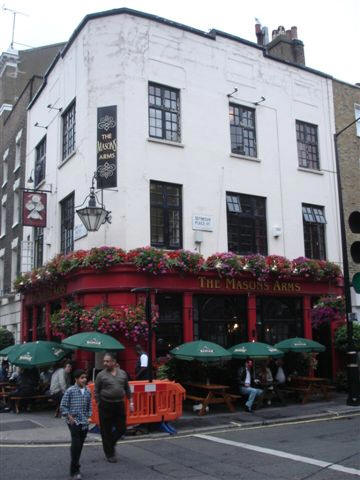
I listened carefully as I could hear drums beating from beyond the mall. The mass crowds of peoples’ ears pointed upwards and the loud roar from the crowd emerged into quiet whispers. The drumming continued to get louder and louder, and finally I could see the Queen’s Guard contingent slowly walking from St. James’s Palace, off The Mall on Malborough Road beating their drums and walking as though they were mannequin like figures with stern expressions across their faces. Over the large crowds of people surrounding the railings at the Victoria Monument, I caught a glimpse of the large bearskin hats that are the stereotypical feature of the British guard. As I stood in front of Buckingham Palace I was awestruck at its majesty and eagerly waited the changing of the guard, one of the greatest traditions of England’s royalty. As the daily ceremony commenced, I could not help but notice the reverence of the assembly and the countless faces amongst us. So many people had come to witness this traditional English ceremony and it made me think about how England’s historical past had become a tourist attraction.
The procedure of the ceremony begins at St. James’s Palace, situated off of The Mall in Marlborough Road. A detachment of the ‘Old Guard’ forms up there in Friary Court at 11:00 am for an inspection by the Captain of The Queen’s Guard. This contingent then makes its way down The Mall towards Buckingham Palace at approximately 11:15 am preceded by a Regimental Band or Corps of Drums.The other half of the Old Guard is already on duty at Buckingham Palace and is inspected while awaiting the arrival of the St. James’s Palace detachment. The St. James’s detachment enters the Palace Forecourt through the South Center Gate and takes up position beside the Buckingham Palace detachment on the left hand side of the forecourt. Now complete, the Old Guard awaits the arrival of the incoming ‘New Guard’ from Wellington Barracks situated at the Buckingham Palace end of Birdcage Walk.(http://www.trooping-the-colour.co.uk/mounting/index.htm)
The changing of the Guard at Buckingham Palace, or more formerly known as Guard Mounting, is a popular London tourist attraction, close to the main London hotels, drawing thousands of visitors to Buckingham Palace to watch. The changing of the guard takes place in the courtyard of Buckingham Palace and is free to anyone to watch daily. The easy access to the ceremony makes it a desirable for London visitors and is also conveniently affordable. Tourist attractions like the changing of the guard mark a new era of tourism in the last decade of the 20th century (Ostergren and Rice, Ch. 11).
Traditional mass tourism in Europe was always to beaches or the mountains, yet a new variety of tourism has emerged. This new abundance in traveling stems from an emerging consumer preference for something different then traditional packaged European tourism. The demand today is more flexible travel arrangements and is being met by revolutionary changes in European transportation. As I traveled to London, I was able to take an easy Jet that is advertised for 69 euro’s roundtrip. The implementation of trains, buses, and advanced infrastructure also allow easily accessible transportation that caters to those wanting to see the main attractions of a city. Today, the preservation of historical buildings and landscapes is a relatively recent phenomenon. Upholding and maintaining these historical buildings and monuments allows for cities to develop these sites as main tourist attractions. As I visited Buckingham Palace and witness the Mounting of the Guard, I could see the historic nationalism present in the royal family and the traditional meaning of the ceremony, but the large crowds of people allowed me to witness the affects of changing tourism.

















